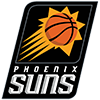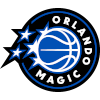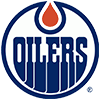The draft is arguably the best part of any fantasy sport. You get to be a general manager, building the foundation of a team that you'll need to live with for an entire season. You want to be prepared, and that goes beyond just having a knowledge of the game.
Here's some pointers ahead of draft day for the 2020-21 fantasy campaign…
Understand your format
There are two main types of fantasy hockey leagues: head-to-head points and rotisserie. In head-to-head point formats, you face an opponent over the course of a week, and the highest point total receives a win. Rotisserie formats tabulate your team's stats across categories and rank them against your league competitors. At the end of the season, the more categories you're highly ranked in, the better you do.
Keep in mind the positional breakdown of forwards, as well. Yahoo! Leagues default to C, LW and RW, but some leagues use a generic forward (F) position, encompassing all three groups together. In leagues that distinguish between the three positions, many players carry two or even three eligible tags. For example, Hurricanes forward Andrew Svechnikov is LW/RW eligible. Players like this add versatility to your lineup, and they can be even more valuable given the challenges of a truncated, 56-game season.
Review the scoring system
Categories vary based on the league, so it's essential to review your league's settings. A default Yahoo! League rewards skaters for goals, assists, plus/minus, power-play points, shots on goal and blocked shots. Goalies
The draft is arguably the best part of any fantasy sport. You get to be a general manager, building the foundation of a team that you'll need to live with for an entire season. You want to be prepared, and that goes beyond just having a knowledge of the game.
Here's some pointers ahead of draft day for the 2020-21 fantasy campaign…
Understand your format
There are two main types of fantasy hockey leagues: head-to-head points and rotisserie. In head-to-head point formats, you face an opponent over the course of a week, and the highest point total receives a win. Rotisserie formats tabulate your team's stats across categories and rank them against your league competitors. At the end of the season, the more categories you're highly ranked in, the better you do.
Keep in mind the positional breakdown of forwards, as well. Yahoo! Leagues default to C, LW and RW, but some leagues use a generic forward (F) position, encompassing all three groups together. In leagues that distinguish between the three positions, many players carry two or even three eligible tags. For example, Hurricanes forward Andrew Svechnikov is LW/RW eligible. Players like this add versatility to your lineup, and they can be even more valuable given the challenges of a truncated, 56-game season.
Review the scoring system
Categories vary based on the league, so it's essential to review your league's settings. A default Yahoo! League rewards skaters for goals, assists, plus/minus, power-play points, shots on goal and blocked shots. Goalies are judged by wins, goals against and saves, with a bonus for a shutout. Commissioners can also configure the settings to allocate fantasy points for PIM, shorthanded points, faceoff wins and hits. Your virtual team will ultimately perform better once you have a deeper understanding of which categories are valued most in your league.
You'll need to take a different approach in rotisserie leagues, aiming to diversify your stat line. Goals typically produce the most fantasy points, but ranking first in goals doesn't mean much if you come in last in multiple other categories. A rotisserie league demands that fantasy managers put together well-rounded teams, so players that can score and hit (like Alex Ovechkin) have added value in these formats.
Research and mock drafts
Once you have a grasp on your league format and scoring settings, it's time for research. Sweep through the transactions (trades and signings) that happened in the offseason and check out players that are on the rise. Examine which players you think over-performed or disappointed last year, and adjust your rankings accordingly, then that knowledge and put it to practical use with mock drafts. Your understanding of fantasy will be tested against real people, and mock drafts help refine your strategies and uncover potential tactics used by your competitors. By the time you get to your actual draft, you should know the general range of when specific players come off the board.
Understanding risk
Ideally, you'll be excited about mainstream players and sleepers alike. Leagues aren't won in the first round, but they can certainly be lost by taking the wrong player. A good rule of thumb is to slowly take on more risk as the draft progresses. You want to target high-floor players through the first few rounds to establish a baseline for your team before rolling the dice on sleeper candidates. Once you've snagged a core you're comfortable with, don't be afraid to reach for players that you're confident will break out this year. Keeping an eye on average draft position (ADP) can be useful to help pinpoint when to pull the trigger.
Keep an eye on the crease
Per the 2020-21 NHL rules, teams will be required to carry three goalies for the entire season. It's unclear how each team will handle that rotation, but it's unlikely that anyone will deploy a three-man rotation. Nevertheless, it's important to project how teams will run their crease this year. In past seasons, many would often rest their top goalie to ensure he was healthy for the postseason. In a condensed season, there may be less emphasis on that strategy. However, teams are utilizing tandems frequently these days; even stars like Tuukka Rask and Ben Bishop conceded the crease often last season. Therefore, netminders like Andrei Vasilevskiy and Connor Hellebuyck come at a premium with no proven backup to cut into their playing time.
Furthermore, having depth is key at every position, but it's even more vital with goalies. If you miss out on one of the elite netminders, it may be worth it to stock up on premier skaters in the early rounds and nab unexciting but dependable netminders later on. Keep an eye on the player pool, though. If a run sparks and goalies begin flying off the board, you'll need to grab one or two before it's too late. There's inevitable scarcity with goalies since there's just one starter for each team in a game, so you don't want to be left out in the cold. With the added uncertainty of the truncated campaign and COVID-related protocols, carrying three goalies on your fantasy roster should be the bare minimum.
Stacking linemates
This can be difficult to accomplish at the start of the season. Line configurations are fluid, and there's no guarantee that they'll stay the same for three periods, let alone a full season. If you can find a reliable stack, however, your week-to-week ceiling increases drastically. Stacking linemates has a proven positive correlation in your point total, specifically in head-to-head point formats. Boston is the best example, as the Marchand/Bergeron/Pastrnak unit has been dynamite for years. Targeting other high-octane offenses is a wise move, since even if the skaters don't play together at even strength, they'll often team up with the man advantage, which usually provides another bonus for fantasy managers.
Know your bias
Hockey fans have biases; we have favorite teams and a distaste for rival clubs or even individual players. When it's time to draft, though, leave your bias at the door. It serves no use, and it could end up being a detriment. Furthermore, try to understand your competitors' biases, as well, and be ready to capitalize on them. If Blackhawks winger Dominik Kubalik is still on the board late and you think he'll fall to you next round, take a look at who has selections between your current pick and your next one. If there are some Blackhawks fans in that mix, Kubalik may get snatched up.
Watch out for injuries
Come Jan. 13, some players will take the ice for their first game action in 10 months, while others were playing some of the most important games of their lives just four months ago. There will be injuries, and you need to be mindful of them in fantasy drafts. If you see an injury tag on a player in the queue, be sure to read the analysis to see when they're expected to return. There are very few players that are worth drafting in the early rounds if they're on track to miss months of the season. After all, what's the point of having them for the fantasy playoffs if you don't qualify?
The work doesn't end here
The draft is just one part of the fantasy season. If you don't feel satisfied with your roster following the draft or after the first few weeks of the season, there are plenty of ways to change course. Be active on the waiver wire and keep an eye on players that get dropped by your competition. Try to make trades. Simply put, stay engaged — championships aren't won at the draft.


































